Firuze
Digitizing the Timurid Mosaics
- Team / Mete Kutlu
- Location / Paris
- Period / October 2022
- Partners / French Institute of Oriental Studies
Firuze is a luminous archive of virtual Timurid mosaics. These holographic enamels emerge from the trans-temporal confrontation between the cutting-edge algorithms of photogrammetry and the mosaics of enameled tiles, the star-shaped symbols of cosmic favor and divine destiny. They blend the superhuman complexity of the contemporary algorithms with the ancient mystical teachings of light, shamanistic intuitions of the nomadic Turks, the glittering discoveries of the Persian alchemists and the genius of the Timurid architect. The holographic enamel is where the electronic light of the pixel submits itself to the intuition of the Timurid architect to sublimate the earthly colors of baked bricks into the divine blue of the heavens. It is the virtual reflection of the Timurid Eye’s fundamental predilection: luminous visual impressions. Expressed across different media, scales and ways, it takes the form a glittering glazed tile in architecture, a gold-sprinkled folio in a manuscript and the polished mirror of the artist’s heart in mystical literature.
Turquoise Places
Firuze Video Introduction
Firuze Video Introduction
Firuze Video Introduction
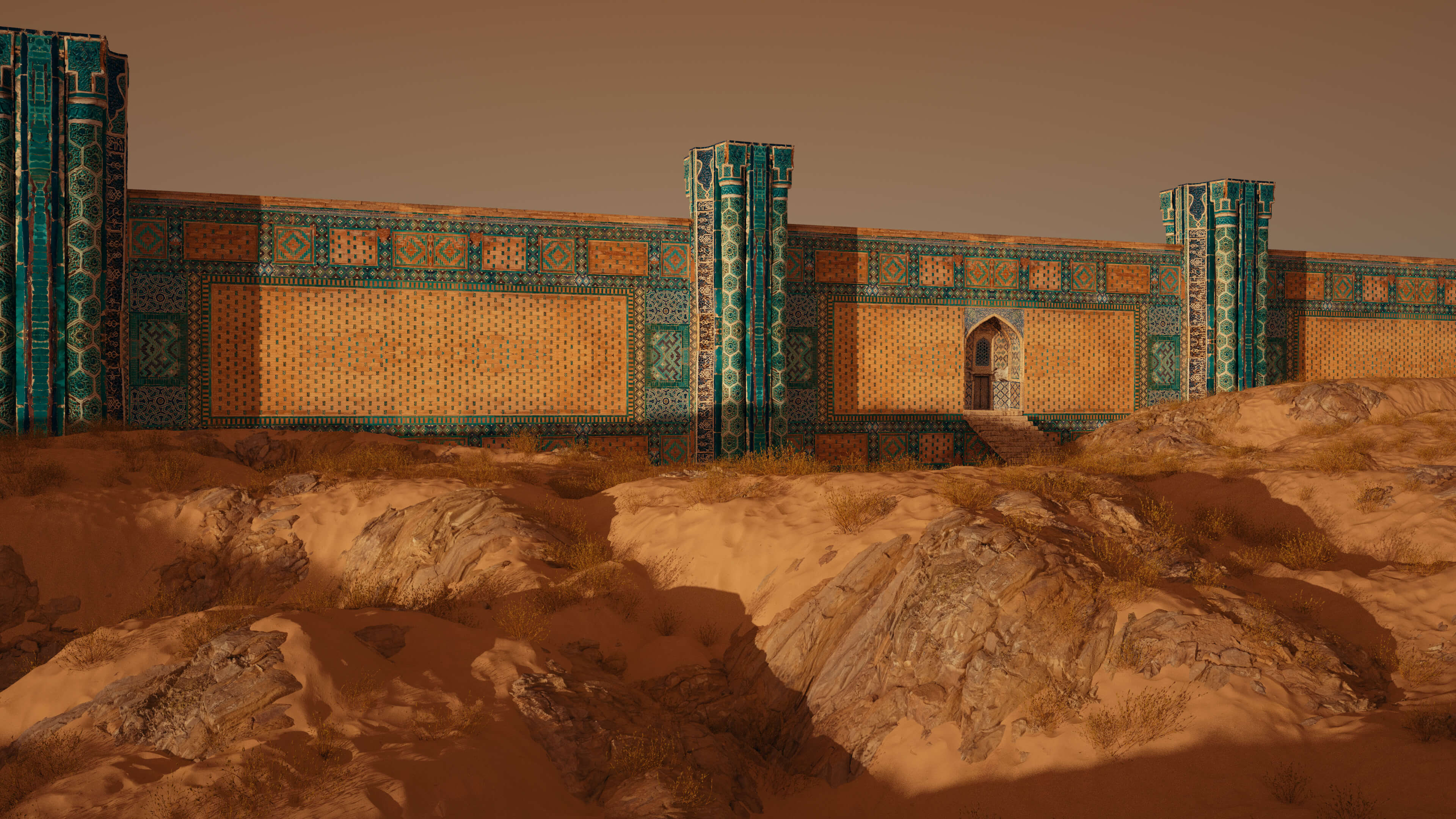
Firuze Video Introduction
Turquoise Catalogue

Catalogue of Scans
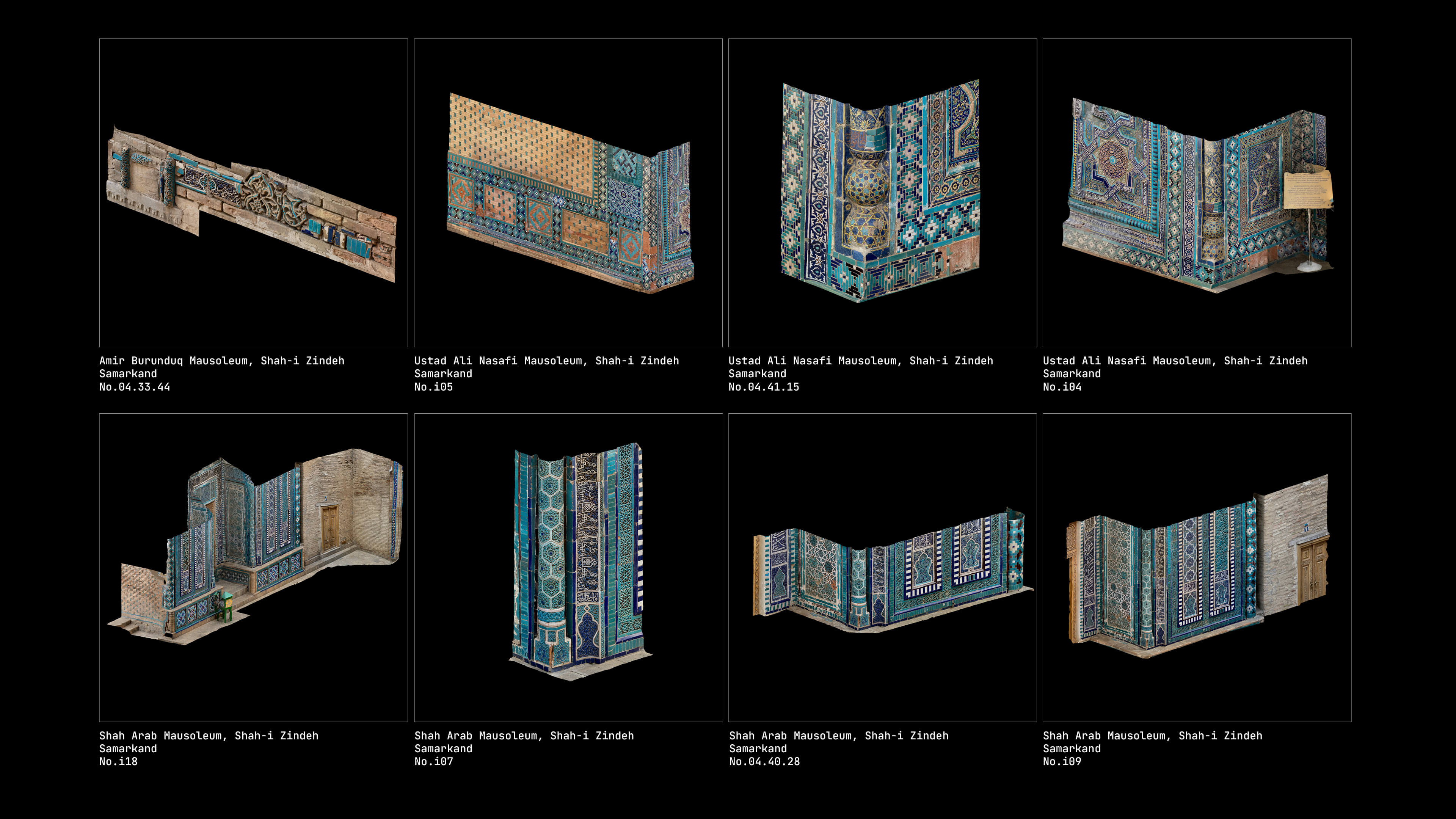
Catalogue of Scans

Catalogue of Scans

Catalogue of Scans
As an experiment on the notion of digital handcrafts, Firuze confronts cutting-edge photogrammetric algorithms of 3D scanning with the intricate Timurid mosaics made of enameled tiles dating from the fourteenth and fifteenth centuries. In Firuze, photogrammetry, the complementary sister technology of augmented reality, is used in two experimental ways. First, it becomes a key research tool of field study in digital humanities. Instead of limiting data collection to texts or two-dimensional photos and sketches, it allows to bring back home an entire fragment of space in 3D and to visit, whenever required, in augmented reality a life-size piece of architecture acquired from a distant research site. Secondly, photogrammetry is used as an architectural on-site research tool to study the visual and spatial dynamics privileged by the “Timurid Eye” and the Turquoise Renaissance. It requires a particular way of taking pictures which depends on the materiality, geometry and context of the object to scan. It allows and requires the close-up examination of different types of enameled ornaments and their different visual qualities such as reflectivity and roughness. The resulting 3D models are first cleaned and catalogued. Then they are transformed into animated holograms or glowing wireframes offering almost a tactile experience.
Enameled Meshes
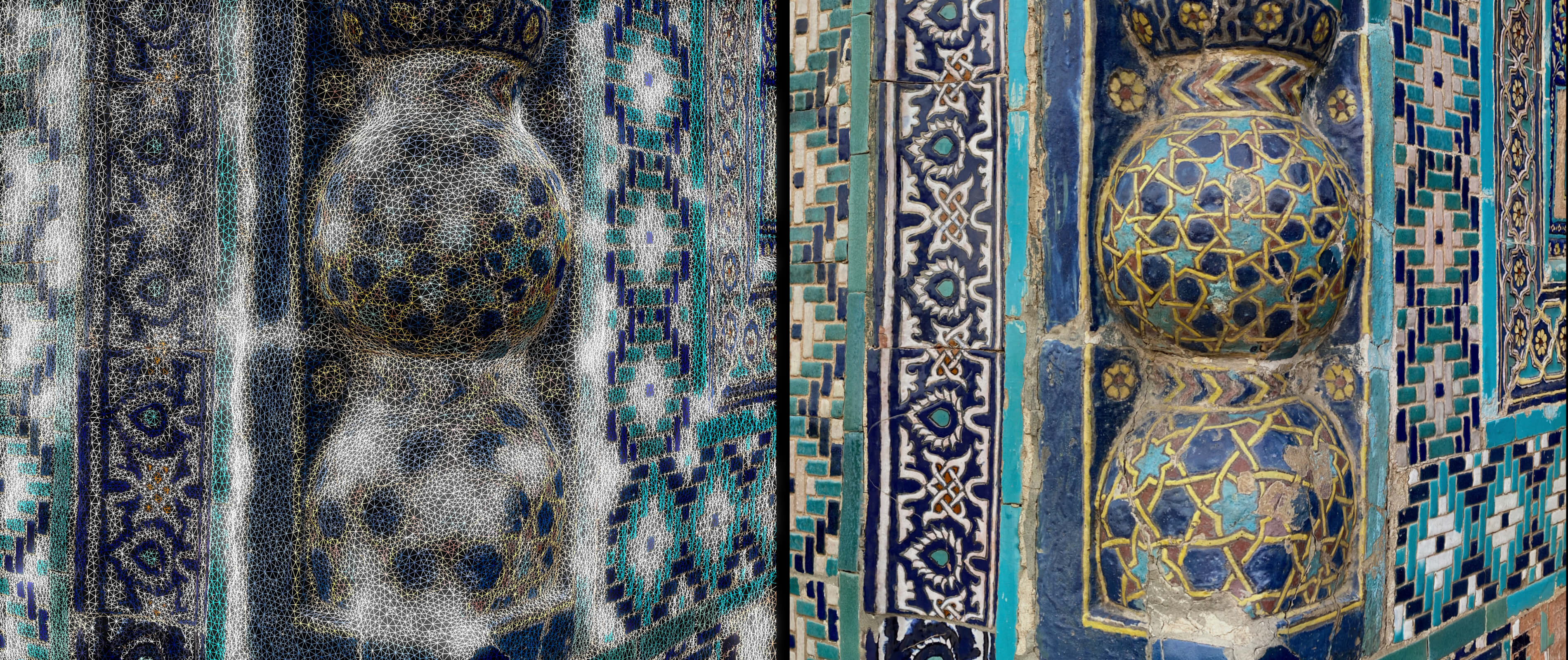
Architectural detail from the Ustad Ali Nasafi Mausoleum, Samarkand, No.4-41-15
Architectural detail from the Ustad Ali Nasafi Mausoleum, Samarkand, No.4-41-15

Architectural detail from the Shad-i Mulk Aqa Mausoleum, Samarkand, No.i03
Architectural detail from the Shad-i Mulk Aqa Mausoleum, Samarkand, No.4-02-10
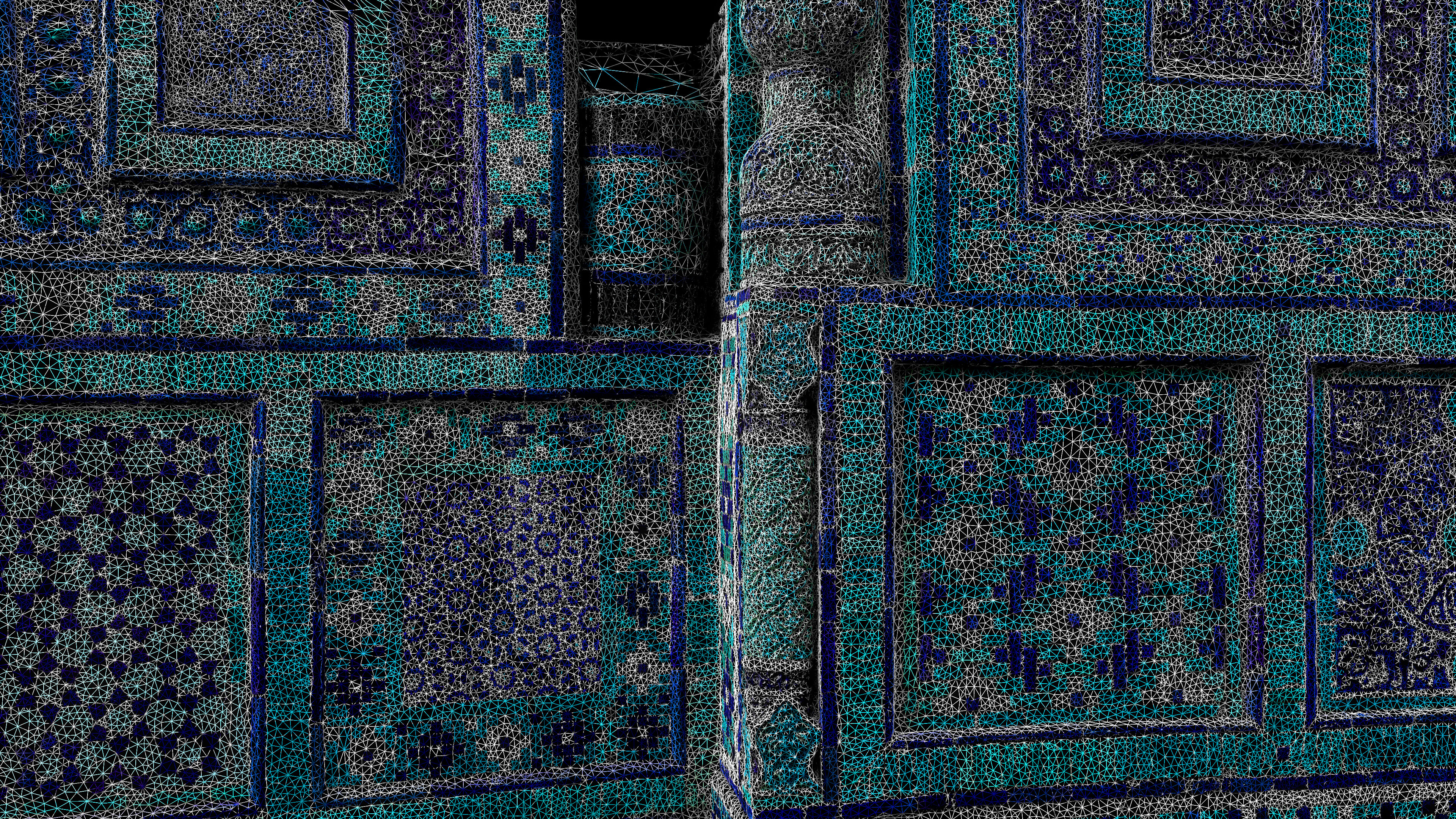
Architectural details from the Amirzadeh and Shad-i Mulk Aqa Mausoleums, Samarkand, No.i01
Architectural detail from the Shad-i Mulk Aqa Mausoleum, Samarkand, No.4-02-10

Architectural detail from the Shad-i Mulk Aqa Mausoleum, Samarkand, No.4-02-10
Architectural detail from the Shad-i Mulk Aqa Mausoleum, Samarkand, No.4-02-10
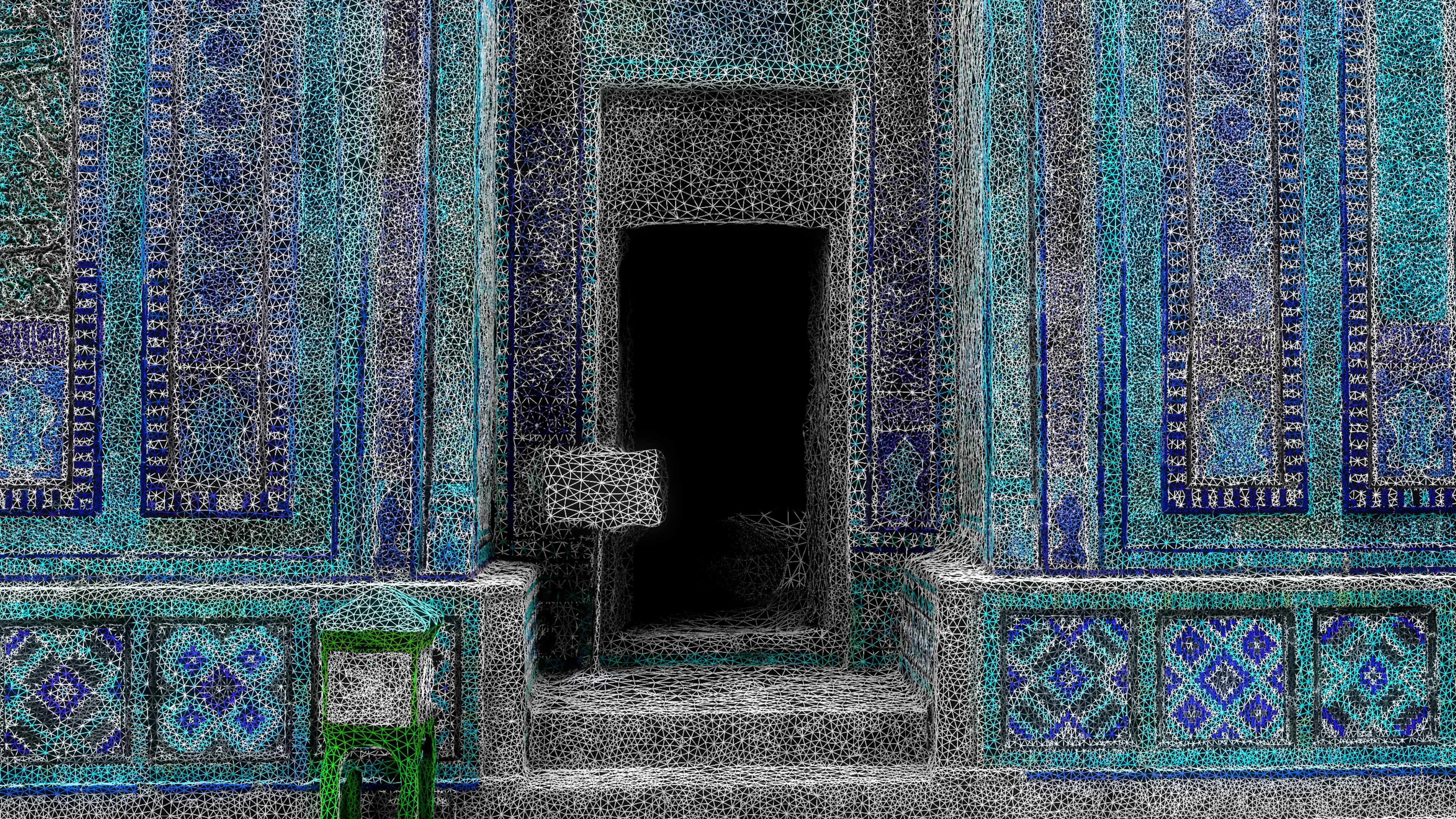
Architectural detail from the Shah Arab Mausoleum, Samarkand, No.i18

Architectural detail from the Abdullah Khan Madrasa, Samarkand, No.b06
Architectural detail from the Abdullah Khan Madrasa, Samarkand, No.b06
Blue Enamels

Enameled polychrome tiles of Haft Rang

Enameled polychrome tiles of Haft Rang

Enameled polychrome tiles of Haft Rang

Enameled polychrome tiles of Haft Rang
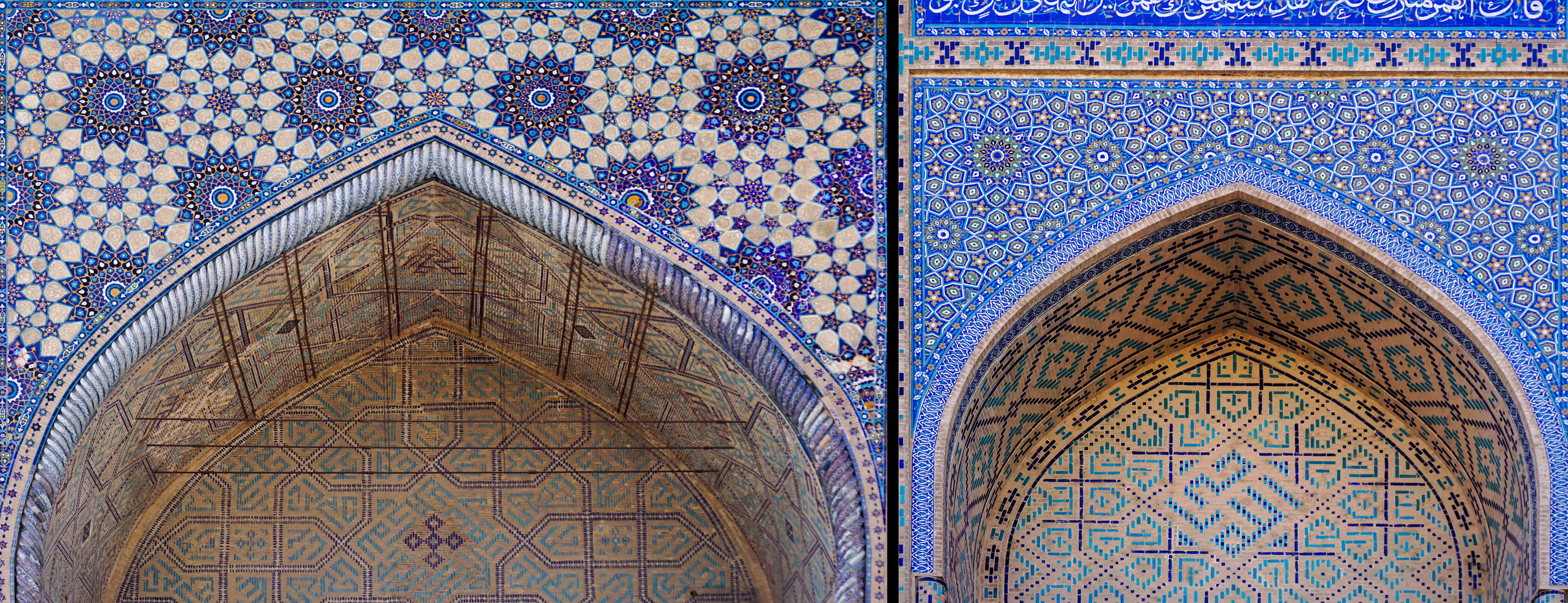
Iwan Ornements of the Ulugh Beg Madrasa (1421) in Samarkand
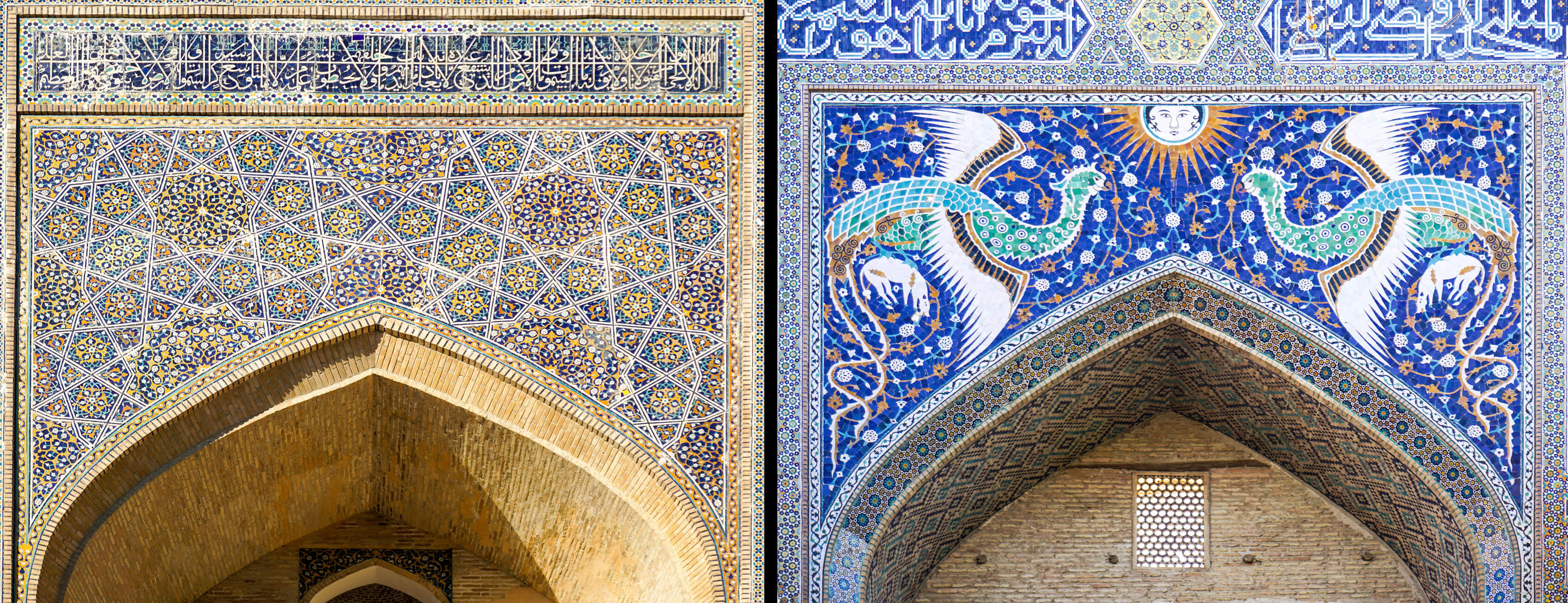
Iwan Ornements of the Khanakah (1620) and Madrasa (1622) of Nadir Divan Begi at the Lab-i Hauz in Bukhara

Iwan Ornements of the Tilla Kari Madrasa (1660) in Samarkand and the Kalan Mosque (1514) in Bukhara
Maps

Scanned Ornaments from the Mausoleums of Shah-i Zinda, Samarkand
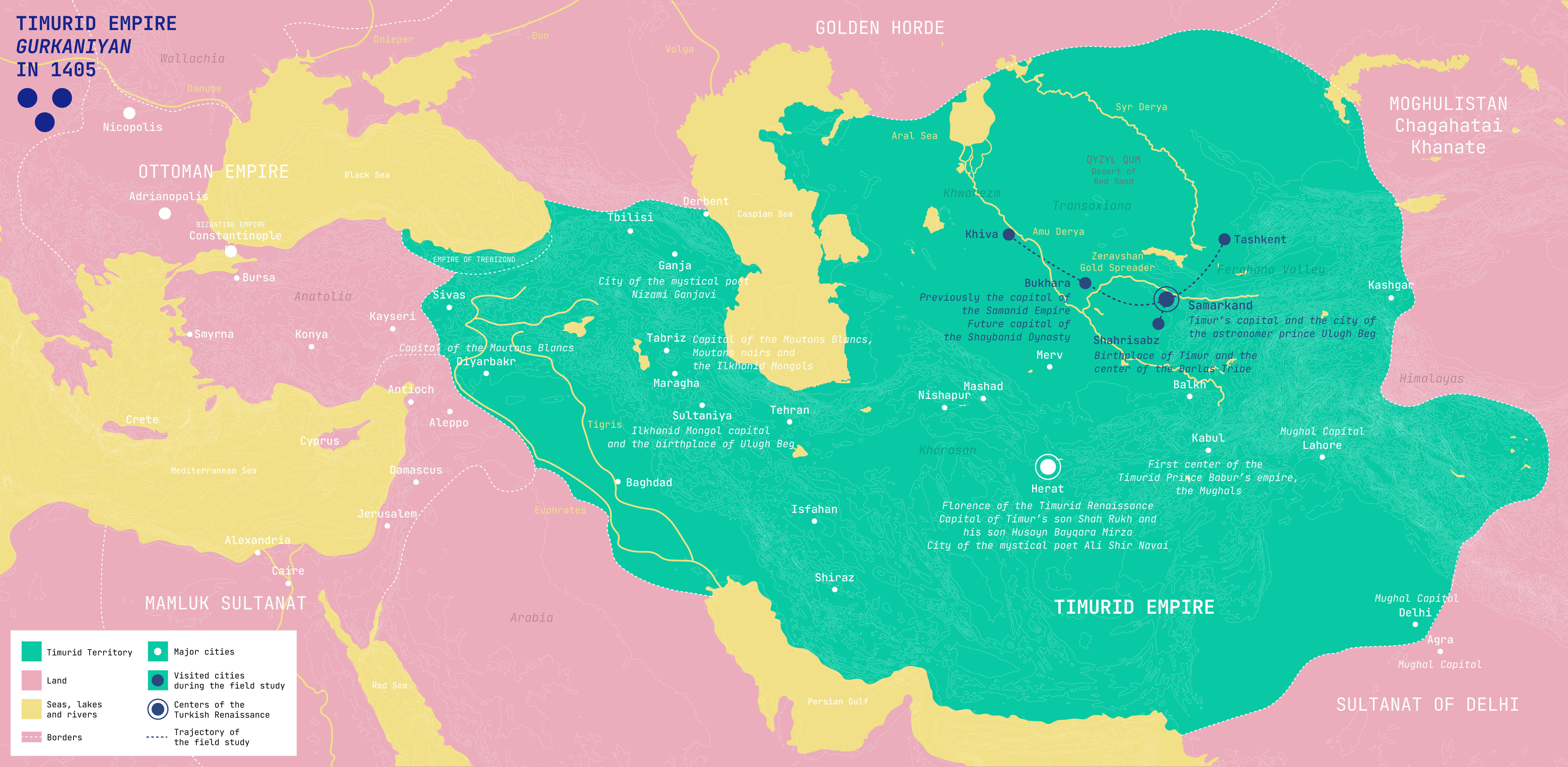
Scanned Ornaments from the Mausoleums of Shah-i Zinda, Samarkand

Scanned Ornaments from the Mausoleums of Shah-i Zinda, Samarkand

Scanned Ornaments from the Mausoleums of Shah-i Zinda, Samarkand
Field Study Photos
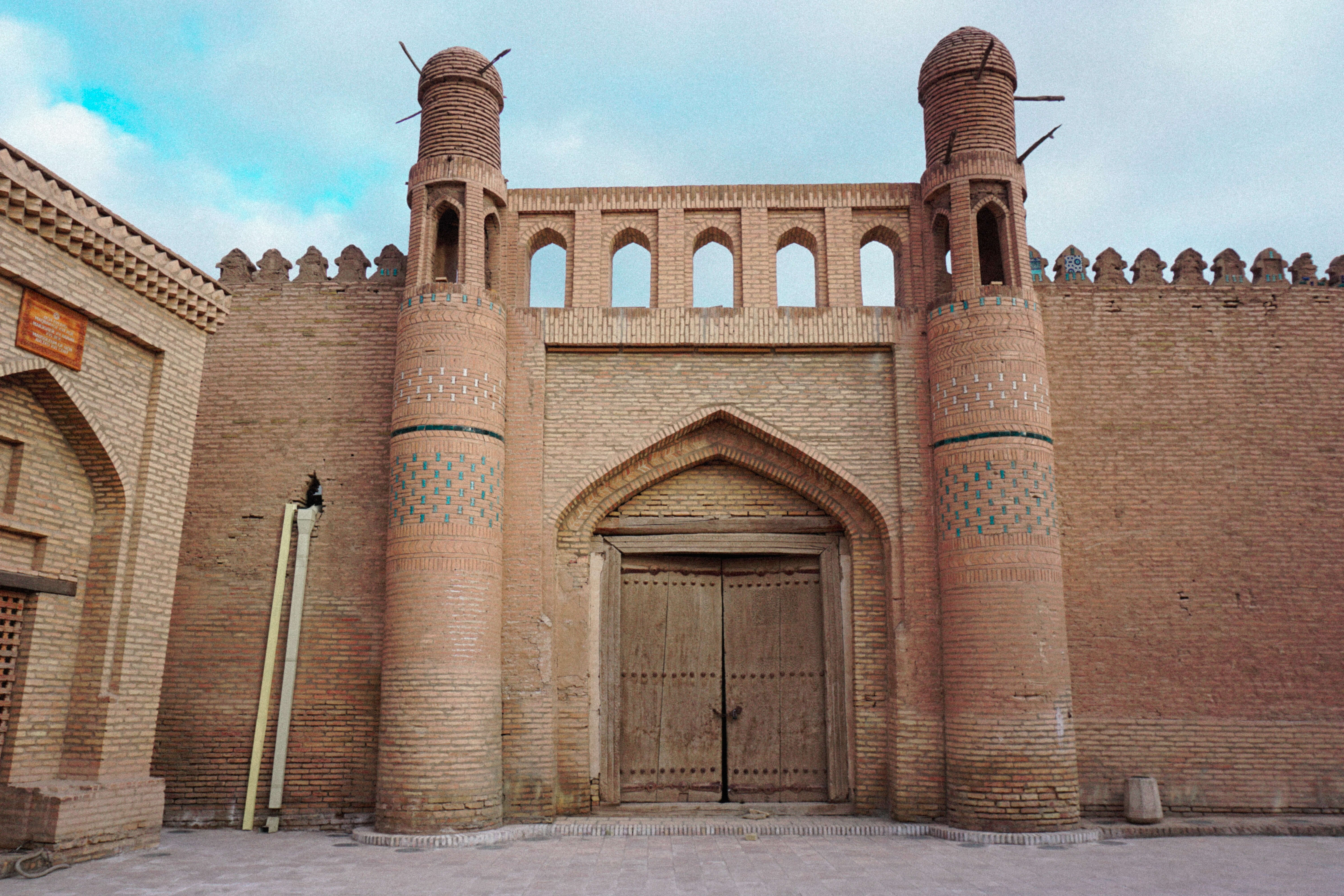
Gate of the Tash Khauli Palace, the palace of the Khiva Khans (1838)

Minaret of the Juma Mosque in Khiva

Khiva
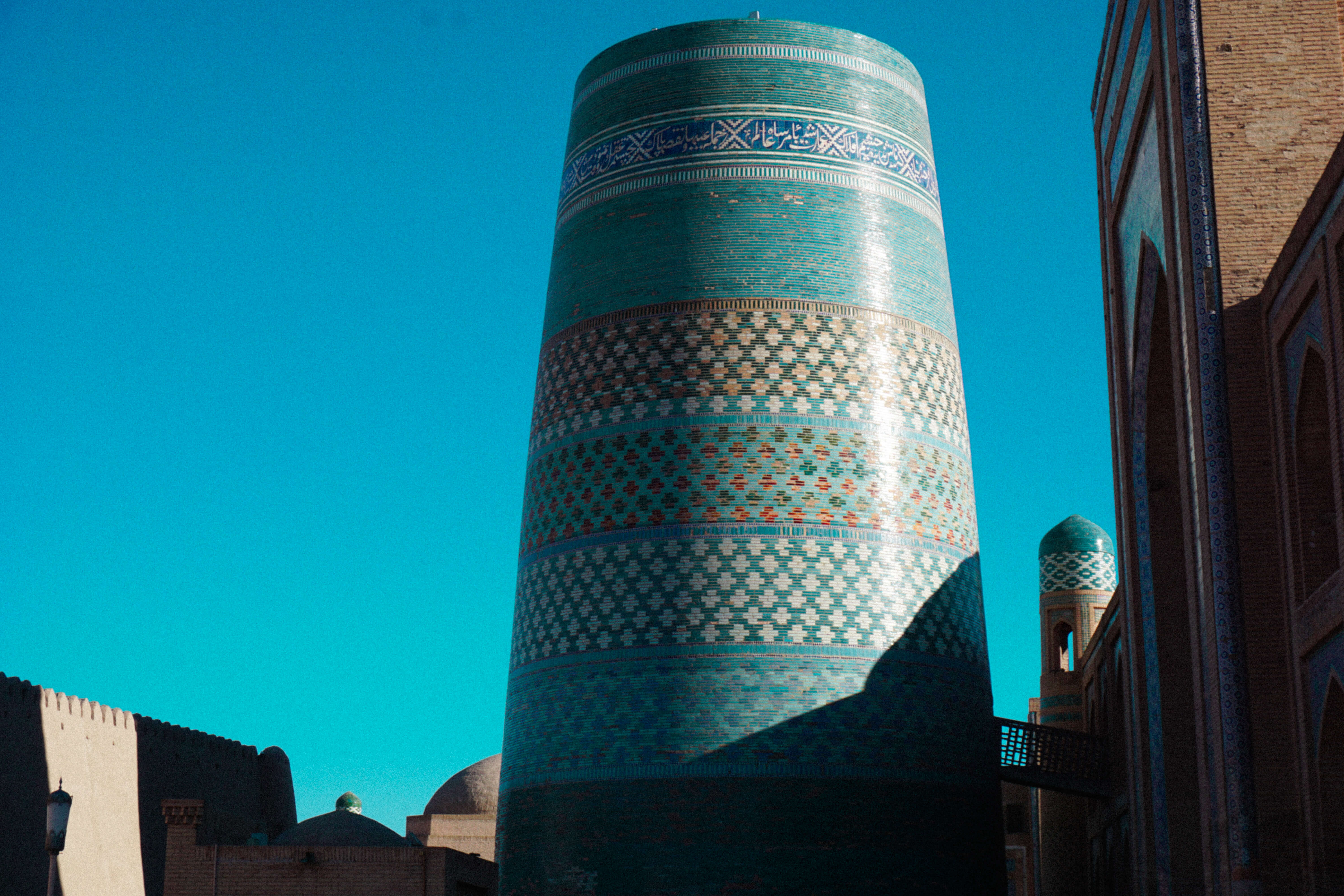
Unfinished Kalta Minor Minaret in Khiva (1851)
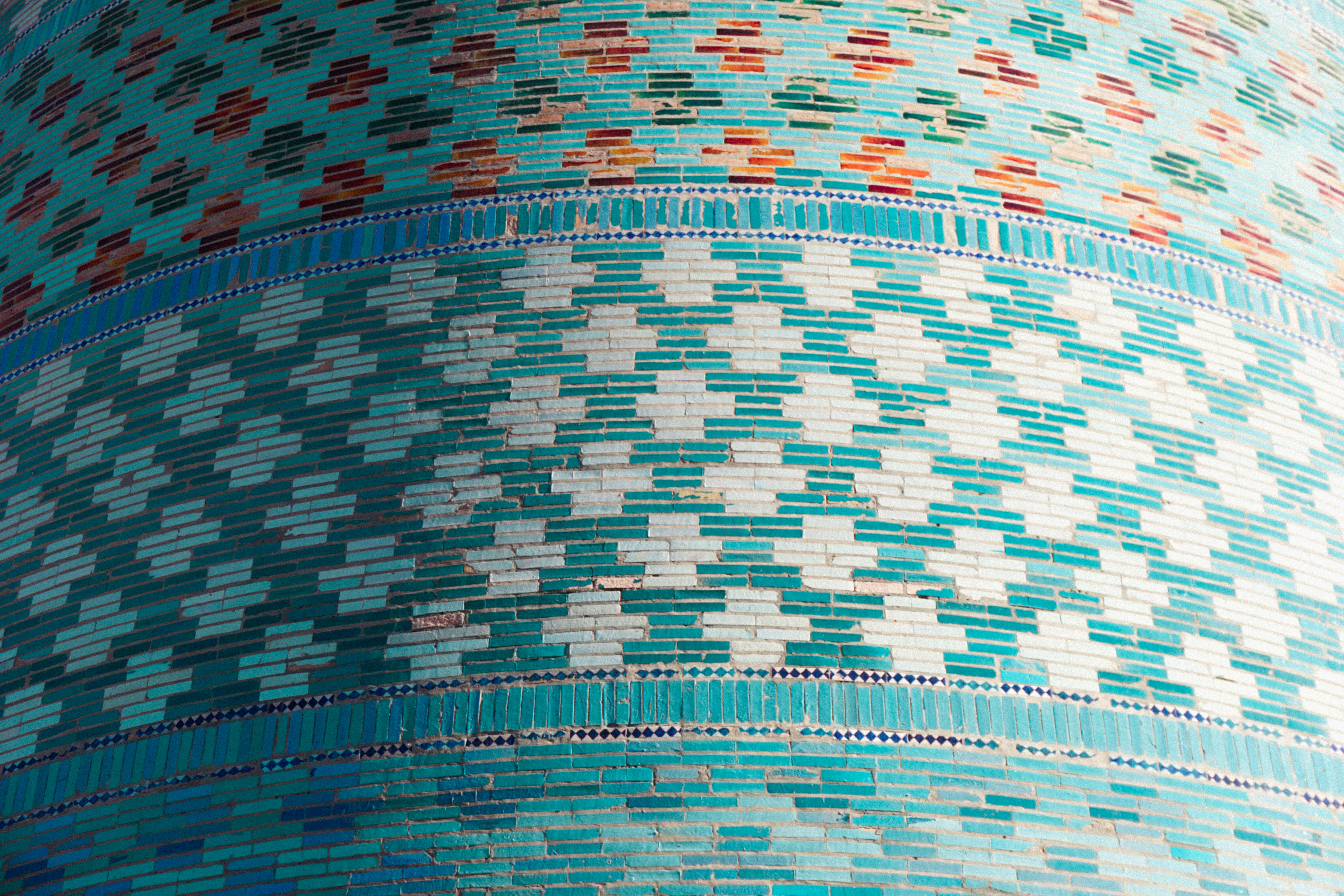
Unfinished Kalta Minor Minaret in Khiva (1851)
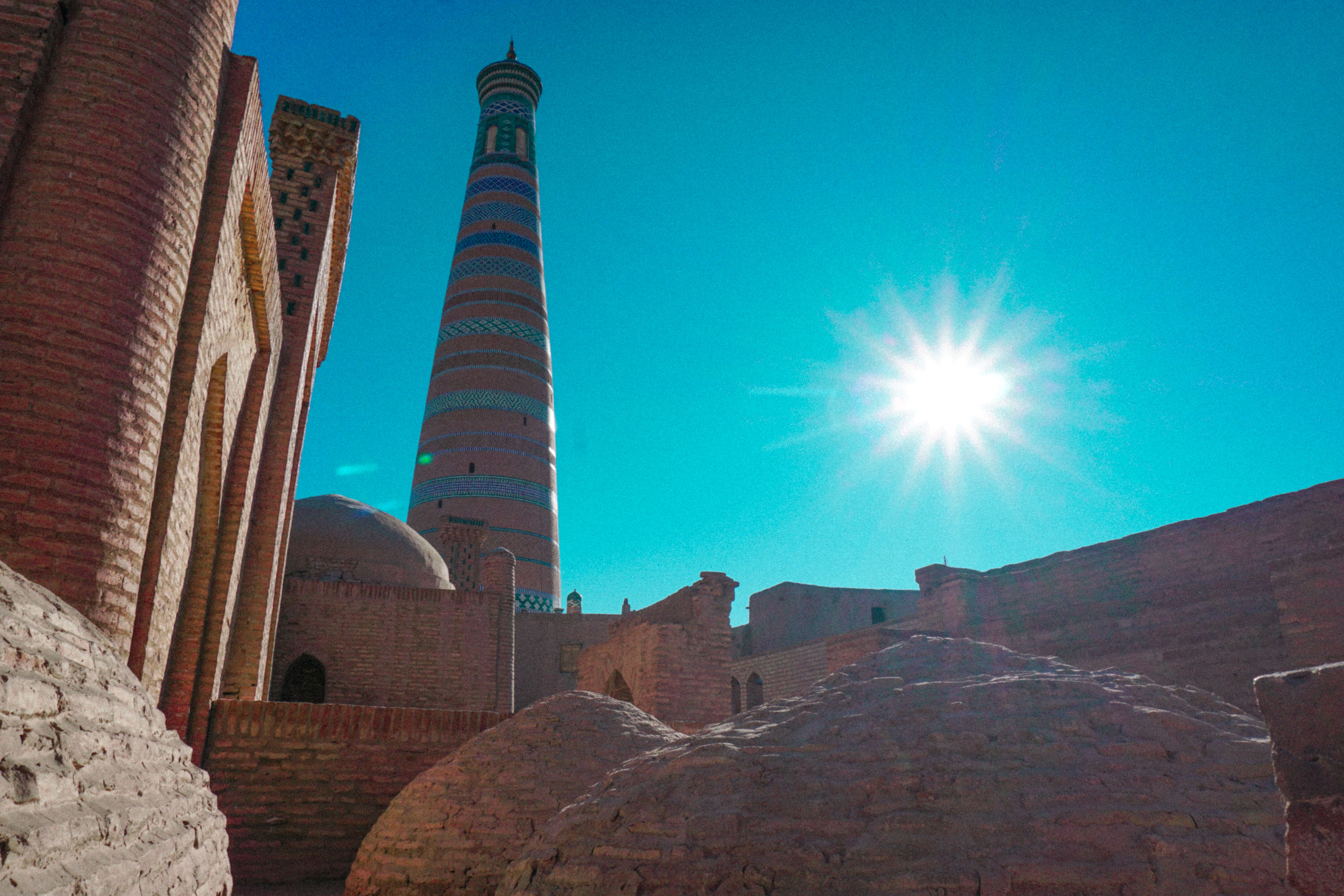
Islam Khodja Minaret in Khiva
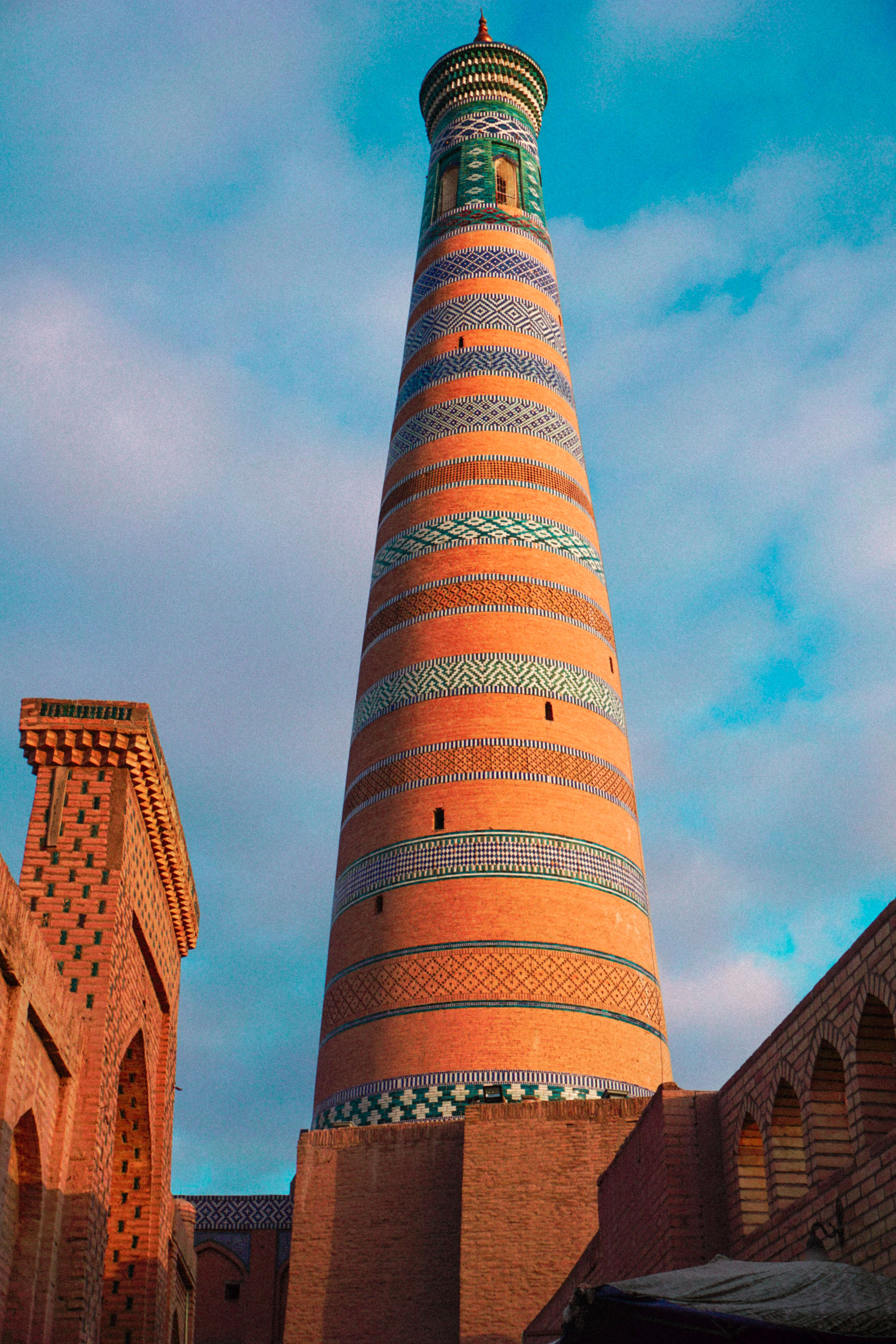
Islam Khodja Minaret in Khiva
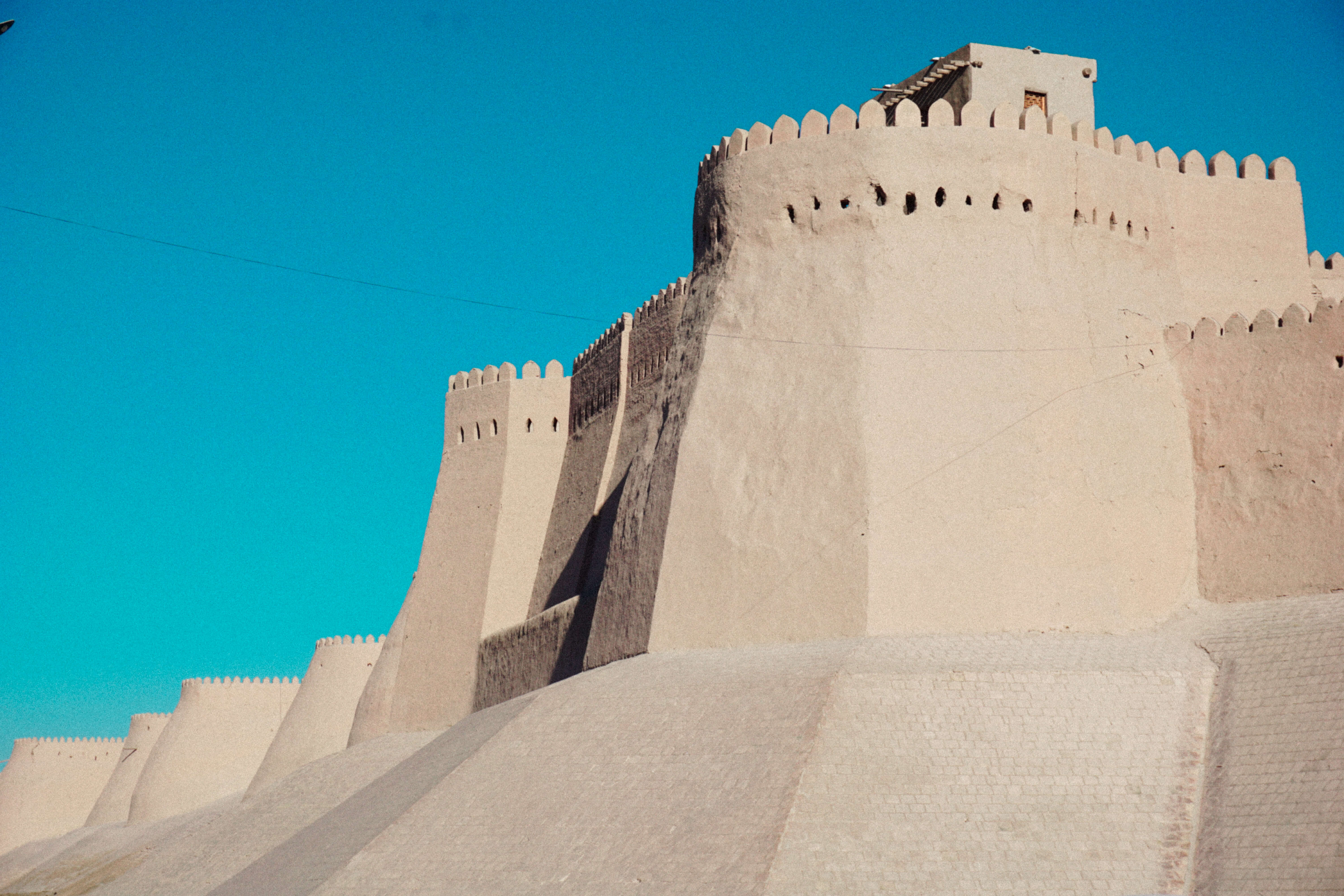
City Walls of Itchan Kala in Khiva

Enemaled Ornements on the crenelations of the wall of the Tash Khauli Palace
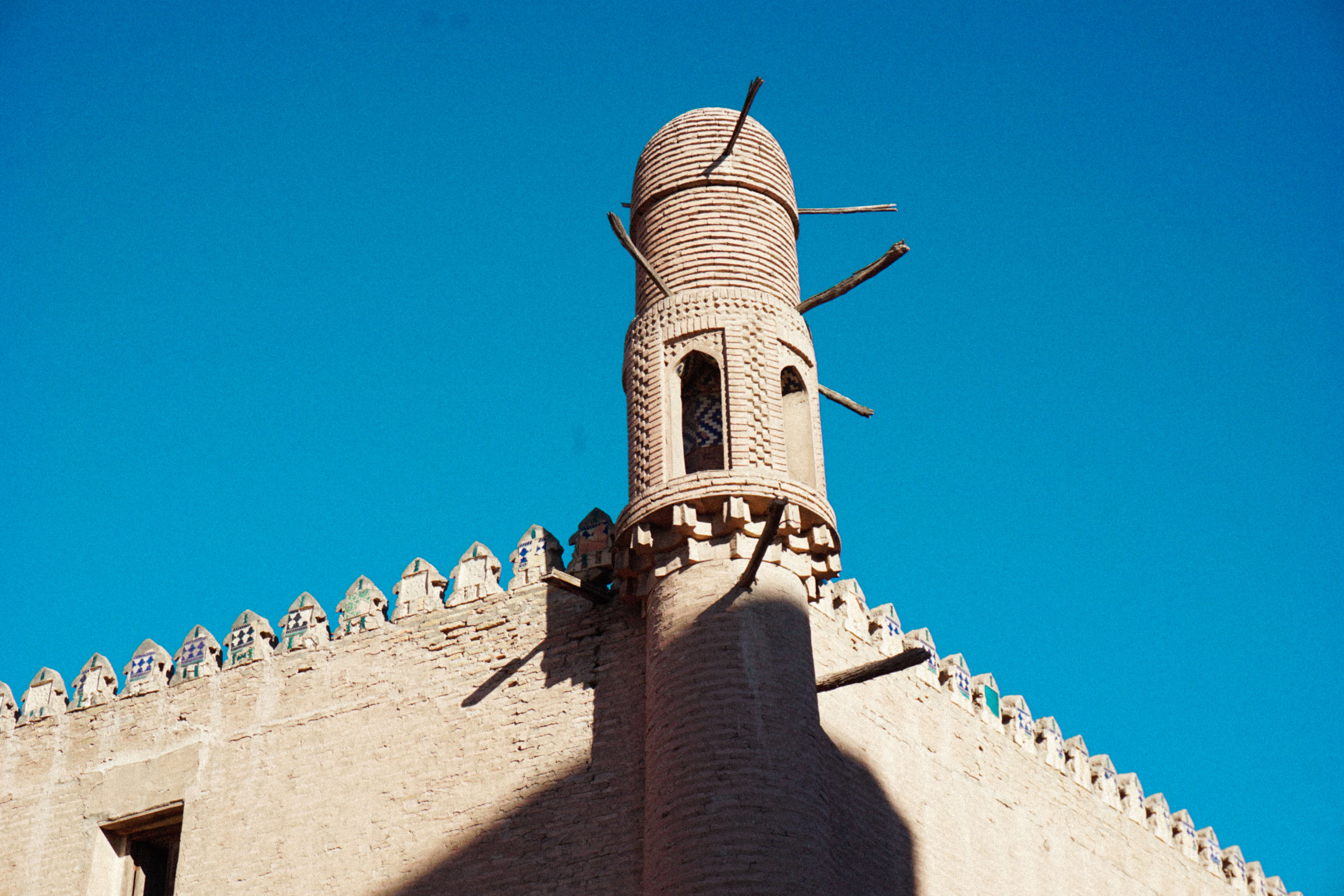
Khiva
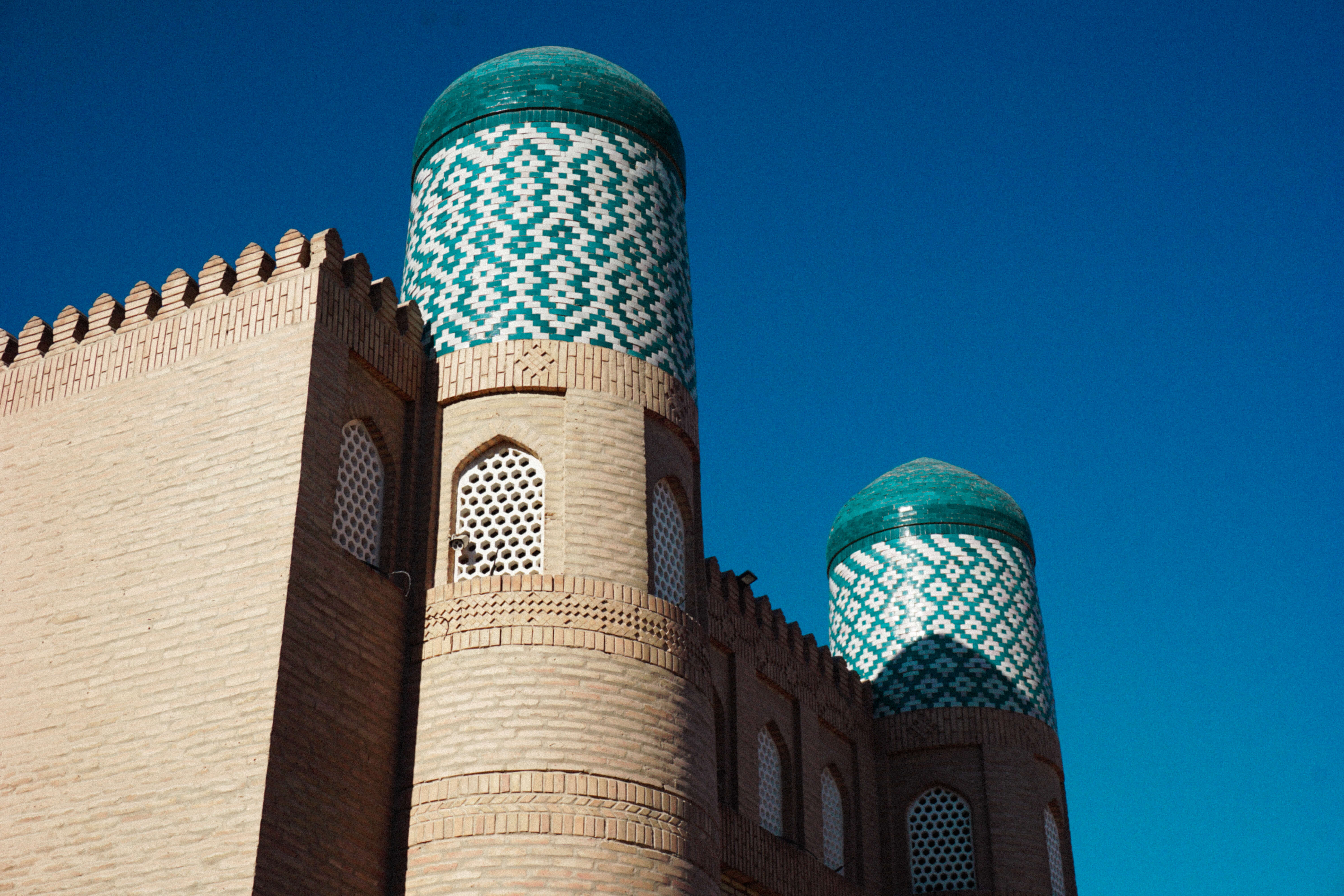
Khiva
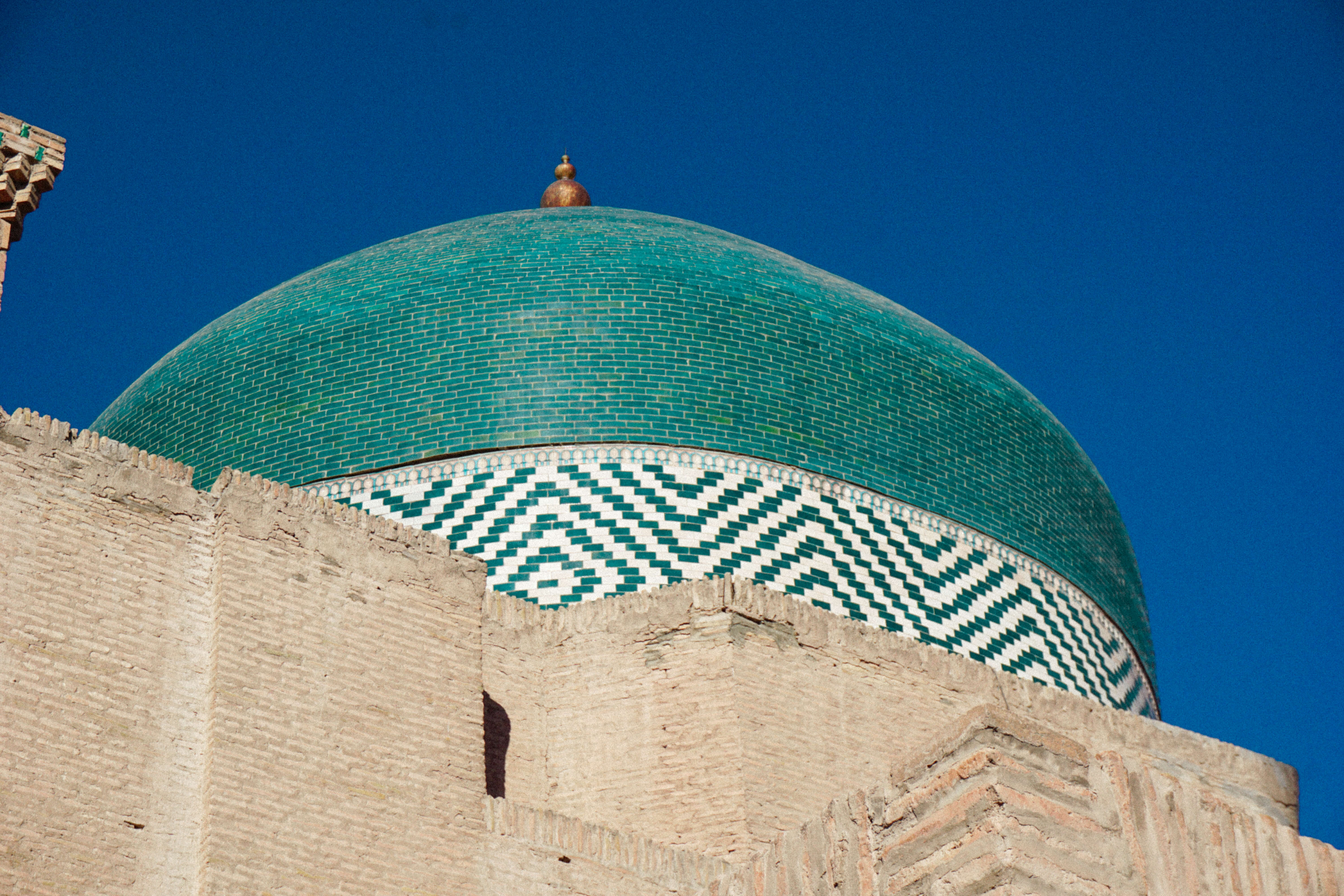
Khiva
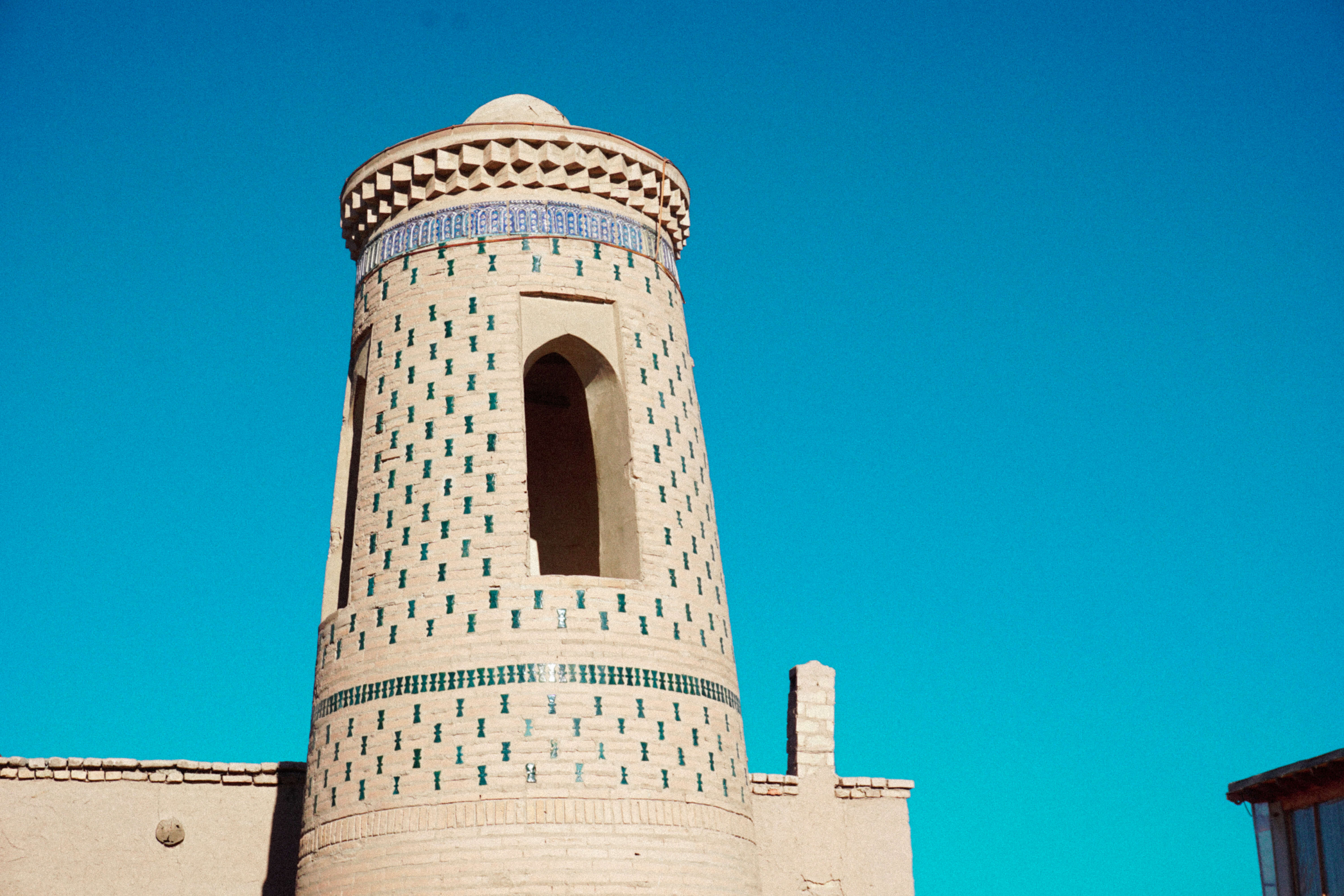
Khiva